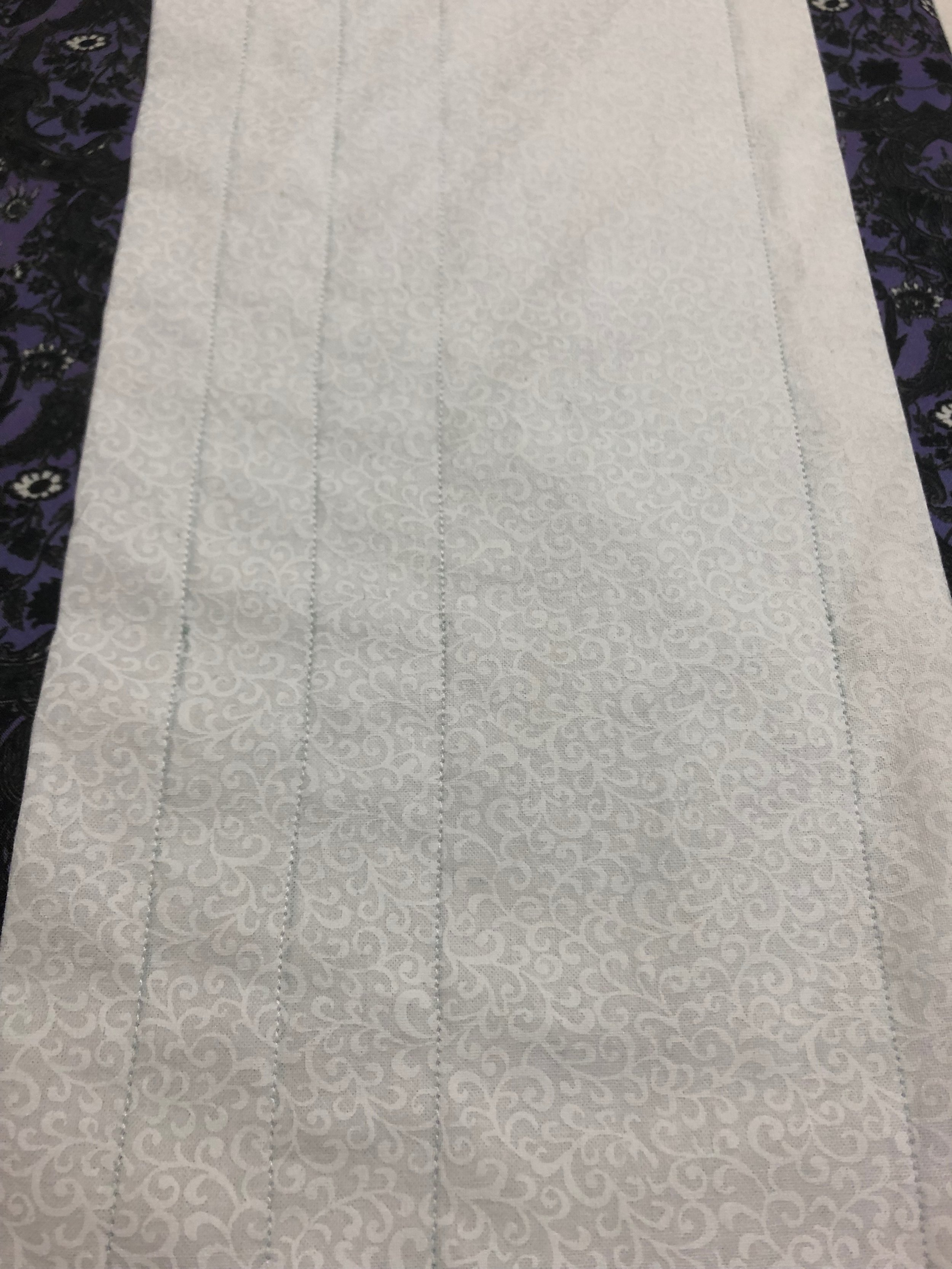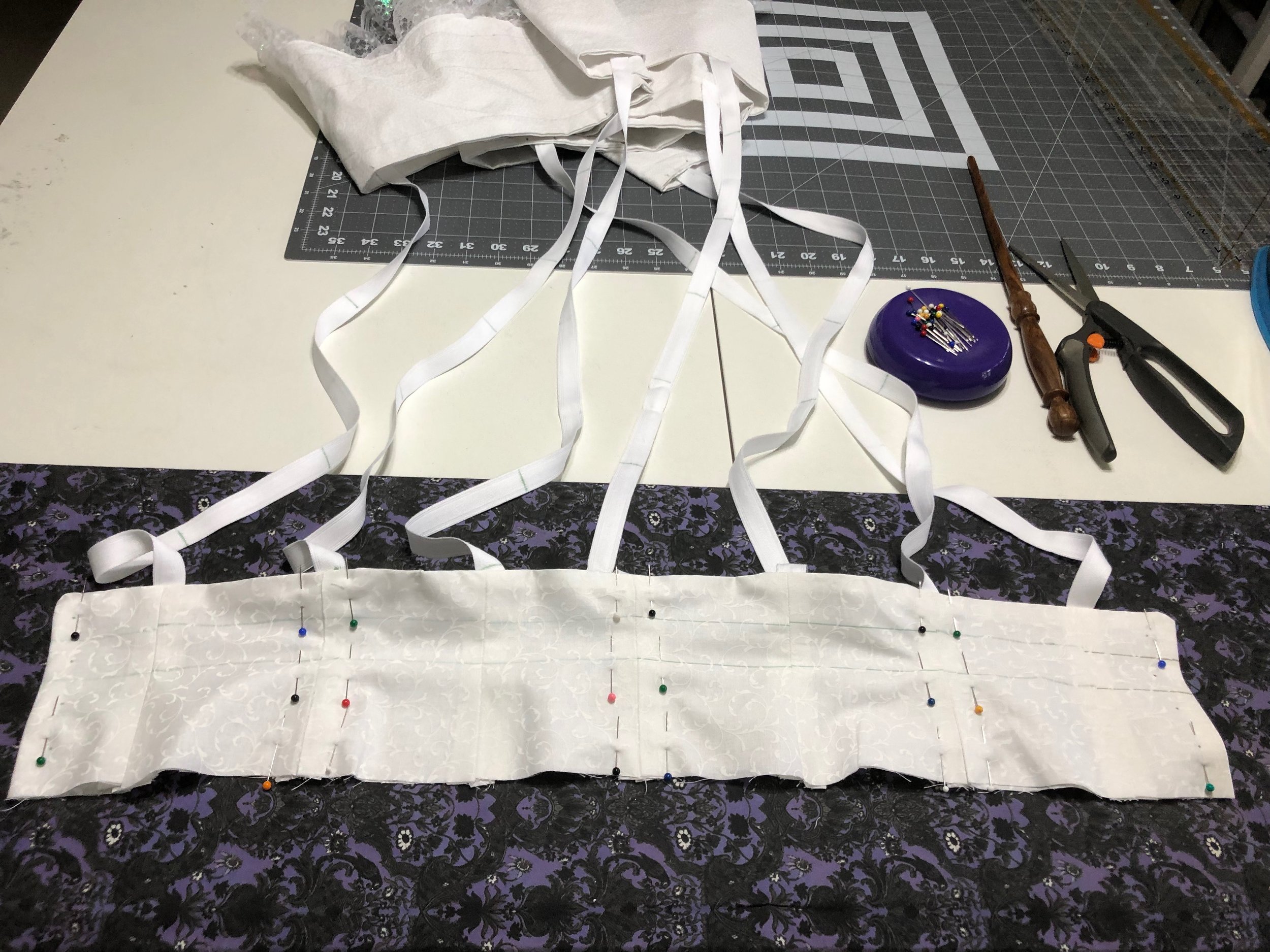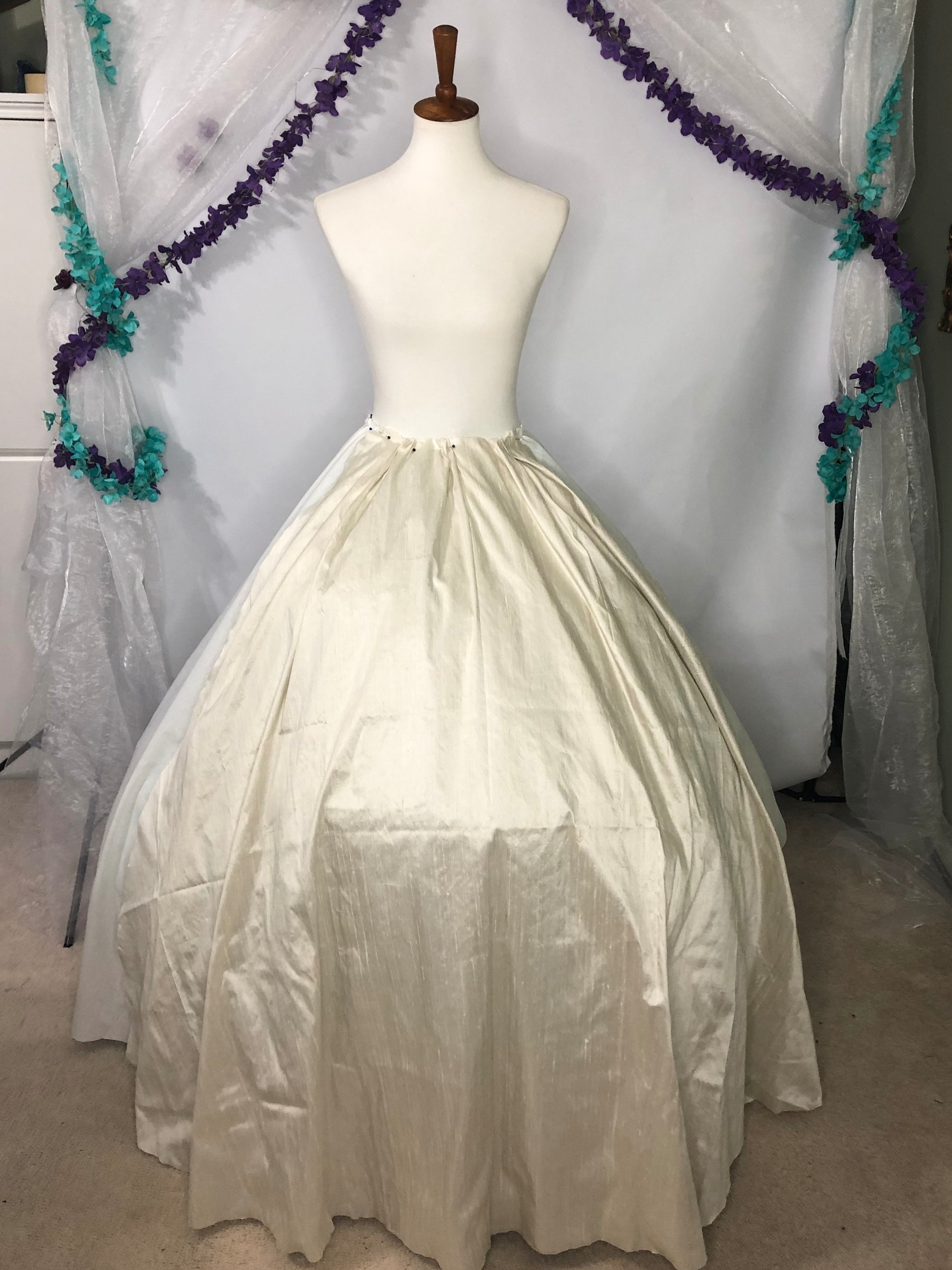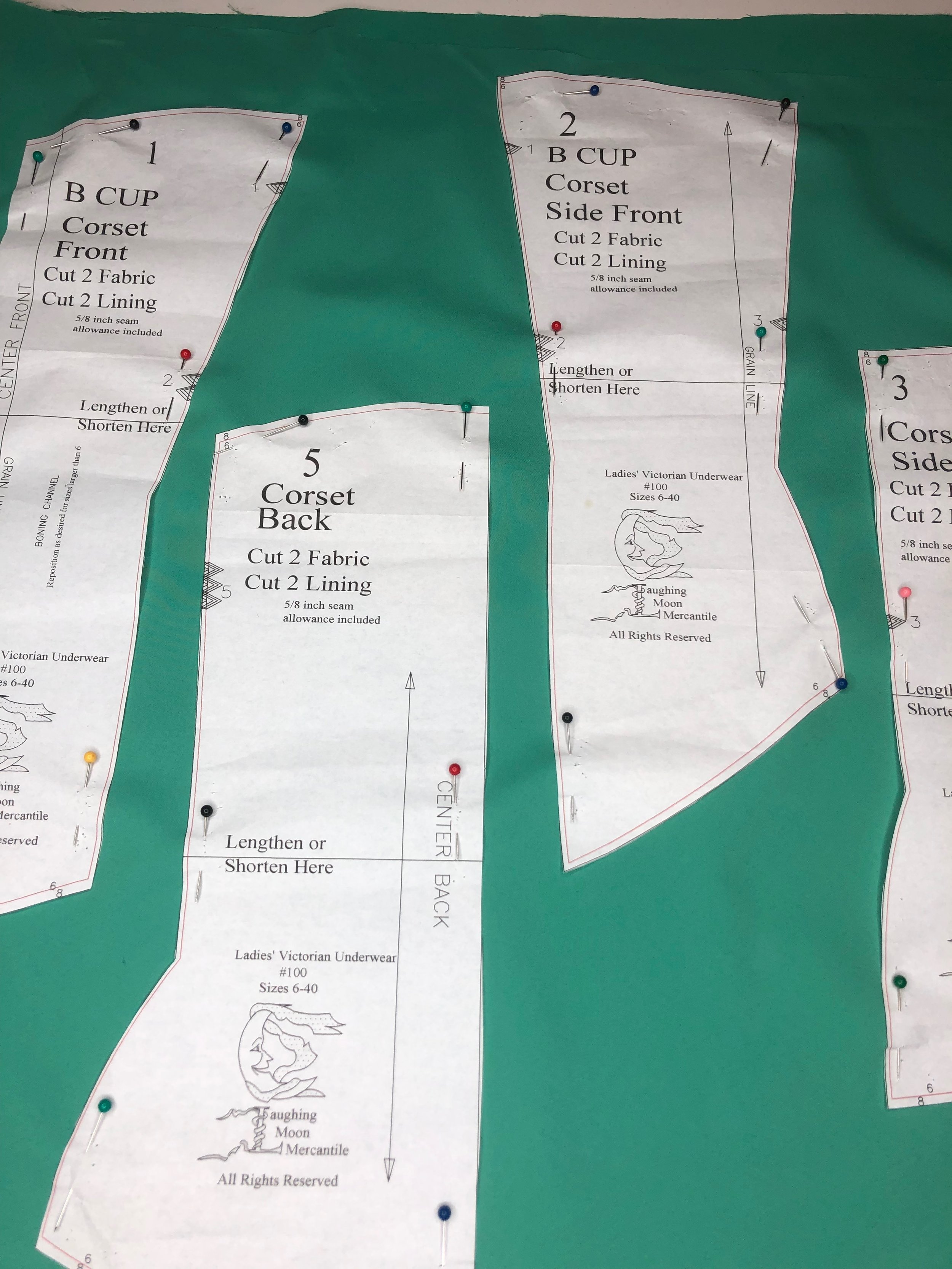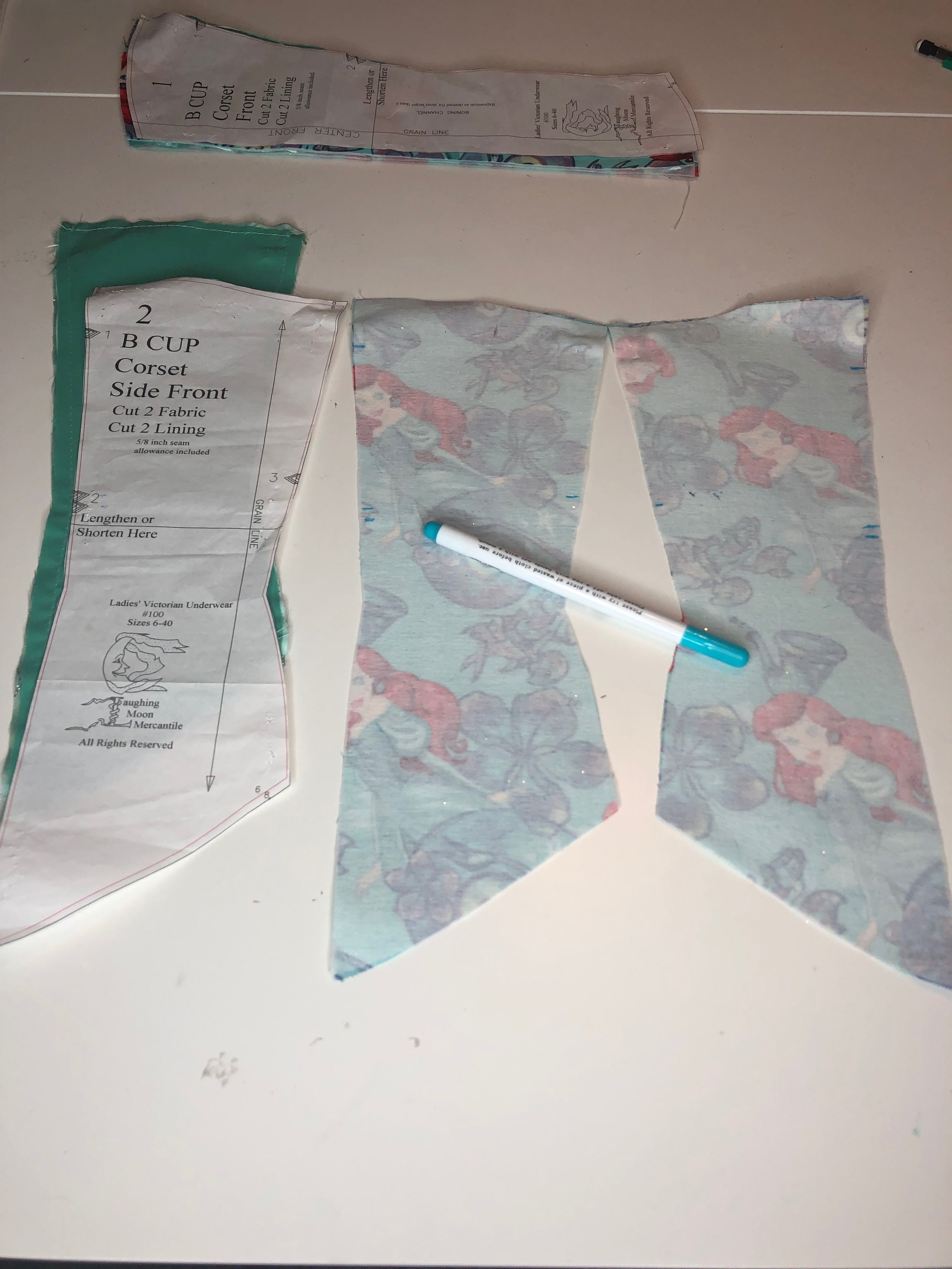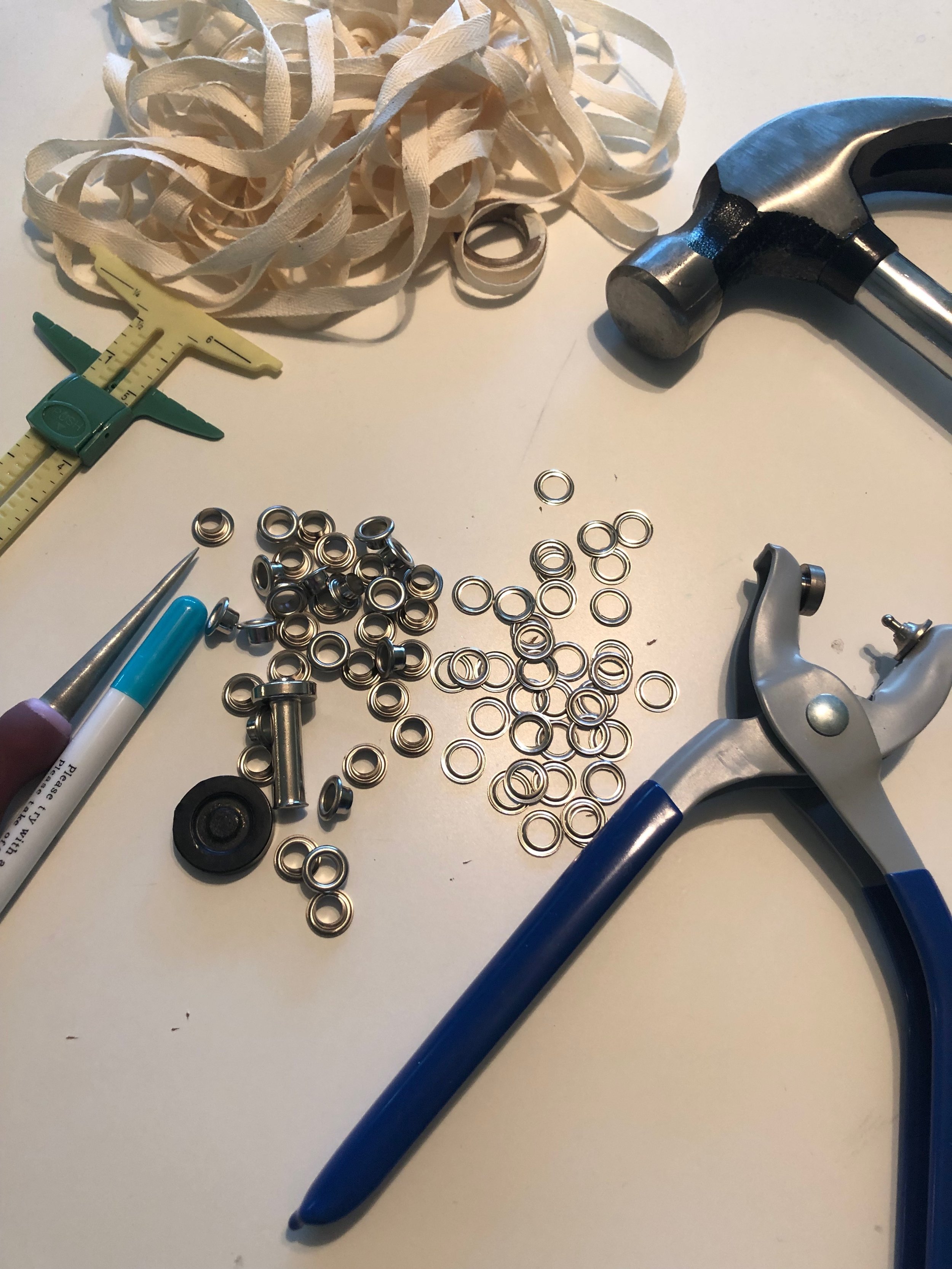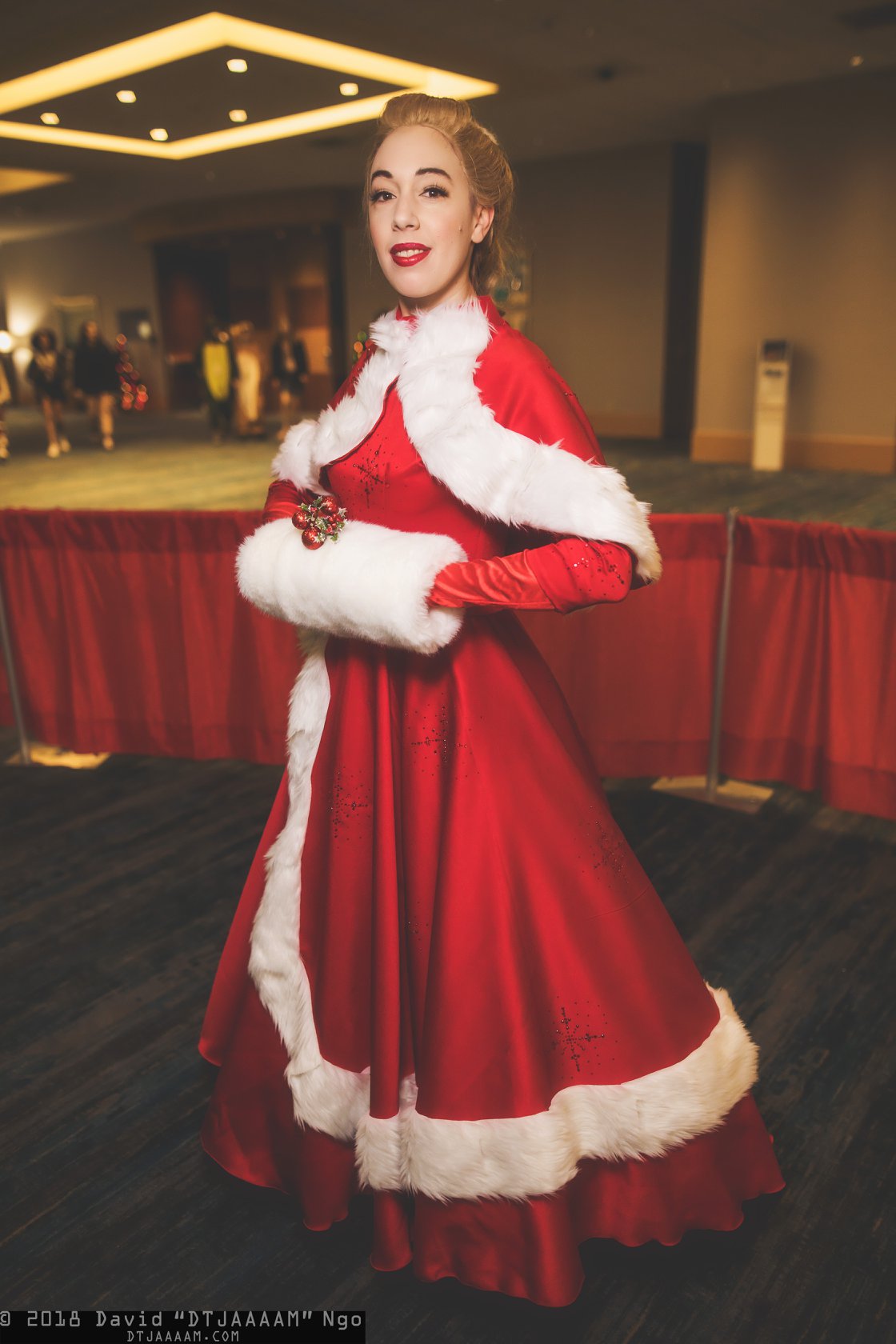Quick Edit: For those interested in video content on making a Cage Crinoline here is my video on making it:
Welcome to a new blog, this time I will be talking about my 1850’s hoop skirt or also known as a caged crinoline. I don’t talk very much about my fiance on here but I am making us 1850’s ensembles for Homebrew Con at the end of June. We are speakers and we are doing a skit/panel on the history of the Imperial Stout otherwise known as the Russian Imperial Stout, although it’s origins come from England but I digress.
We will be hosting our panel as time travelers and acting as though we spent some time in the 1850’s to learn about the origin on the Imperial Stout, in our panel we will be serving home brewed Imperial Stout and we will be dressed as the working class would in the 1850’s. I’ll be in a cotton dress with a hoop and he will be in knicker bockers and a grey cotton shirt.
When I was documenting this process I initially was planning to make a step by step photo documentation to help people use the pattern. I was super successful until I got to the hooping wire and then I just stopped documenting all together because of the space the piece took up in my studio and going between the cutting table, ground and sewing machine began to get difficult. So I will start this blog off with the step by step documentation I did at the beginning and then once I get to the hooping wire section I will talk about the issues I overcame and how I over came them but there wont be any photos of that segment.
To start out I used Truly Victorian 142 for this piece. On their website they actually link you to where you can buy all the materials for these and that makes it super helpful when constructing your first one. I purchased hooping wire in bulk for multiple projects, as well as hoop casing and I used scrap cotton for the bag and cincher. I am desperately trying to go through my scrap fabric so I will be talking about fabric scraps quite a bit in the summer months.
So let’s just jump right into the instructions for this and how to get started on this piece. If you plan to wear this over a corset consider making it the size in which your waist is cinched in the corset. I went with the size D for a 26” waist because I plan to wear this in and out of corset and when it came down to it, the 26” waist fits me cinched down to 24” so it’ll work for several sizes.
The first two steps are obviously to cut the pattern pieces out and then cut the fabric out. I choose to cut all my pattern pieces to the largest size and then mark my size on the fabric. This way I can use the pattern again for clients. Also, these patterns range from $13 to $21 and it’s kind of a waste of money to buy them again for clients since the pattern paper these come on are very durable and could easily be used over and over again. So let’s save some trees friends.
From here on out, all of the quote sections are the instructions and then after the quotes if necessary I will add commentary and share the photo of doing the step.
“Step 1: Cut out 3 of bag on fold, and 4 of each cincher piece.”
I also took this time to cut out the twill tape.
“Step 2: Mark the stitching lines for the bone channels on the bag as shown on pattern pieces, onto the correct side of the fabric.”
I took this time to just mark everything.
“Step 3: Make the bag.”
“Step 3a: Sew all the Bag sections together along side edges, making one long piece. Do not sew into a circle yet. Make sure the marks for the stitching lines are on the correct side of fabric.”
I actually had all the markings for the bag on the “wrong” side of the fabric since I was sewing white fabric I could see the lines through the fabric and that was really helpful for me.
“Step 3b: Press seam allowances to one side and zig-zag over allowance to keep it flat. This will help the bones slide into the bag channels easier.”
This step is a game changer for me, I have never been instructed to do this before and I am so glad I learned this because it’s something that I personally will use in the future.
“Step 3c: Fold the bag sections in half, right sides together, so the fold becomes the bottom edge, and the raw edges the top.”
I also pressed it, I know that’s obnoxious because it gets flipped but I wanted to press it, so I did.
“Step 3d: Sew along the top edge, leaving 6” on each end unsewn.”
“Step 3e: Turn the bag right right side out and press.”
I know I always say this but pressing is just so important, so do it, or else.
“Step 3f: Match the ends of the bag, right sides together and seam the ends together. Press. Flip seam to inside of bag. This seam will be the center front of the bag.”
This part get’s a bit tricky to press the inside of the seam but I used my pressing ham and had no issues getting the entire seam pressed open.
“Step 3g: Stitch along each boning channel line, as marked. Make sure to leave an 8” gap in the stitching at the center front to be able to insert the hoop wire.”
I actually left the entire 6” gap on each side. I remember with the elliptical hoop inserting the wire was really hard because the gap didn’t feel wide enough so I just did it this was and it worked really well for me.
Before moving onto the next step I took the liberty to adding a pretty little lace trim to the bottom of the bag. This is by all means not historically accurate but I loved the trim so I added it and again I needed to get rid of stuff in my stash and what better way to do so.
“Step 3h: Starting at center back and working towards the front on either side place a mark 1/2” from center, and then each additional mark as shown in the chart. This will mark the placement of where the ribbons will attach to the bag.”
So apparently I took less photo’s than I remembered but after marking the bag and the twill tape placement I actually stitched it down.
“Step 4: Ribbon/tapes”
Instead of going over all the instructions in this section I’m just going to say that I followed the markings and stitched the ribbon on in the manor I thought they went and after reading this section it just confirmed my placement and the steps I took to add these.
So moving onto “Step 5: Make the waist cincher.”
Before getting too much into it, the images given with the pattern were rather confusing and contradicted the instructions so I used the instructions for this part and ignored the drawings that came with it because the didn’t help at all.
“Step 5a: Sew the center backs together along the center back seam, correct sides together, making 2 sets: one for the outside and one for the lining. Clip and press.”
I should also not that I stitched these all on 1/2” seam allowances and that I did not clip any of these and it turned out fine. I did in fact press everything though, because you should. I’ll also note that the fabric I used for the cincher is a different printed white calico than the one I used for the bag but considering they were undergarments I wasn’t too concerned with the fabric not matching.
“Step 5b: Sew side backs to center backs, correct sides together. Clip and press seams.”
This is where their diagrams don’t line up, side backs go to center back and side front goes to center front.
“Step 5c: Sew side Fronts to Side backs, correct sides together. Clip and press.”
“Step 5d: Sew fronts to side fronts, correct sides together. Clip and press.”
At this point I also pressed everything another time to make sure those seams were flat.
“Step 5e: Match the two sets together, outside layer and lining layer, with correct sides together. Place the top ends of the support tapes in-between the two layers, matching the top end of the ribbon to the edge of the fabric. The Center back tape should be centered on the center back seam. The side back tape should be centered on the back/side back seam. The side front tape should be centered on the side front/side back seam. The front tape should be centered on the front/side seam.”
The placement of each tape was pretty easy but I had major issues figuring out the placement of the tape in relation to the sandwich pieces. So hopefully this image will show you how I did it and help with that confusion.
“Step 5f: Sew across the bottom edge of the cincher, and each center front end, with 1/2” seam allowance.”
Sewing this part actually attached the ribbon onto the cincher and once you fold it over and press it you will see how the bottom edge attaches the ribbon to it.
“Step 5g: Clip the corners, turn correct side out, and press. Sew five 3/8” wide boning channels into your cincher. One at the center back seam, one at each side seam, and at the front edge.”
For this step I honestly just stitched a 1/4” on each side of the seams and that created a large enough channel for the bones to be placed into.
“Step 5h: Sew 2 rows of stitching from the top to the bottom at each seam line, and 3/8” in from the front edges.”
I combined this step with the previous one.
“Step 5i: insert bones into each of the channels from the top of the corselet, and baste the top of the cincher closed.”
“Step 5j: Finish the top edge of the cincher with zigzag, binding or a trim to cover the raw edges.”
I used binding and then placed the grommets and this is the last photo I took of the progress.
So the rest of the steps are on the hooping wire and adding the hoops. It was so difficult to photograph this section but the instructions are pretty straight forward. I will note that instead of having a 2” over lap on my wire I created a 5” overlap so they would stay secure better. In the past of making hoops I had issues with the overlap not being enough and them popping out.
Another adjustment I made was the bone casing, I added about 6 inches to the casing would actually meet. I also machine stitched each hoop casing on as I added the hoop instead of pinning it all and then sewing it. I used a zipper foot to sew it on and had no issues with sewing it alongside the metal boning.
Those were the only adjustments I made, I chose to use tape to bind the metal together and I just made sure to feed the taped pieces past the first tape so that the stitching would keep the wire from moving.
I also tried Ariels underskirt on over the hoop and it seemed to fit nicely so I plan to use this hoop for future ballgowns as well as displaying pieces.







